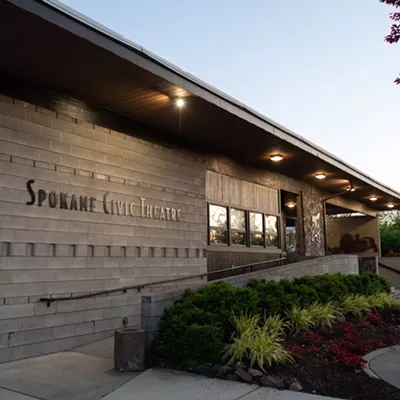
You could say that Hadestown, singer-songwriter Anaïs Mitchell's multi-award-winning musical, began life in 2006. That was the year it debuted as a small-scale, limited-run production in New England.
Then again, you could also argue that it got its proper start in 2010, when Mitchell distilled her musical and dramatic ideas into a concept album of the same name. The critically acclaimed LP featured the likes of Ani DiFranco and Bon Iver's Justin Vernon, and its 20 tracks would form the core of the version of Hadestown that Broadway audiences recognize today.
But to trace the true origins of Hadestown, you'd need to go back a couple thousand years to a time when the ancient Orphic myth was still in active circulation.
Orpheus, as the legend goes, was a divine lyrist who fell in love with and married the incomparably beautiful Eurydice. Her sudden death ultimately compelled him to descend to the underworld, where he appealed to its ruler, Hades, and Hades' wife, Persephone, to release Eurydice back to the world of the living. Hades agreed, but on the sole condition that Orpheus could not look back to confirm that Eurydice was following him out of the depths. Tragically, Orpheus' resolve didn't hold out.
"The musical actually follows the myth pretty closely. There are very small details that differ, but the broad strokes are very much the same," says Kimberly Marable. She starred in the original Broadway company and continues her role as Persephone in the nationally touring production of Hadestown arriving in Spokane July 5.
One change Marable deems important is that Hadestown's Eurydice actively chooses to leave Orpheus and descend to the underworld. She does so out of economic necessity, but it's her own volition — "agency," as Marable succinctly puts it — that brings her to this subterranean labor camp where she exchanges the precarity of freedom for the security of servitude.
That's where Eurydice meets another pair of lovers, Hades and Persephone, whose relationship to each other and the world around them is very different.
"Persephone is the goddess of the seasons, of nature and the harvest, of life, whereas Hades is the god of industry and wealth. And when those things are not in balance, things can be out of whack, like the seasons," she says. That gives Hadestown a "hint of climate-change discussion," something that director Rachel Chavkin has also previously acknowledged.
Weaving in current watercooler themes like climate change or economic uncertainty is how Hadestown has sought to put a contemporary spin on a millenia-old tale. Marable also says that the show's characters, though rooted in myth, have been given added dimensions. Her own character, Persephone, operates a speakeasy without her husband's knowledge as a way of clinging to the world of sunlight and seasons that she once knew.
"All of the characters in this musical are multifaceted because they are not caricatures. There is definitely a humanization, which makes it more interesting. It really allows the audience to engage in this story from anybody's viewpoint," Marable says.
Even the antagonist Hades, played by Kevyn Morrow, isn't depicted as an out-and-out monster.
"He's misunderstood. He's a businessman, as Kevyn likes to say. He wants so much for his wife to be there, and the deal that they made is that she gets to spend six months above [ground]. What does that do to you, whether as a god or person? Equally, you have Persephone, who loves being above ground but also loves her husband. It's complex."
Fittingly for any show with Orpheus in its central cast, Hadestown's storytelling is enhanced by music. Mitchell's songbook incorporates multiple genres — folk, ragtime, jazz, blues and gospel — which was a recurring point of praise for the concept album. Music is so central to Hadestown that six of the seven band members appear onstage throughout. Only the drums remain out of sight, and that has more to do with physical constraints than anything else.
"I love the music," says Marable. "It's such a delight to sing to, to listen to and to dance to. It is unlike anything else in the musical theater canon. And the fact that it is pretty much sung through is also unique, because the music really does have to drive the story."
Persephone's own signature number, a sultry entr'acte titled "Our Lady of the Underground," is one way that she gets to tell her personal side of that story.
"The Fates were in my favor when I was given the opportunity to play this role. 'Our Lady of the Underground' is by far my favorite song to sing. It's an opportunity for me to engage with the audience and really get down and dirty," she says.
"I'm biased, of course, but all of the music will speak to your soul. There will be songs that you won't be able to get out of your head for days." ♦
Hadestown • July 5-10; Tue-Sat at 7:30 pm, Sat at 2pm, Sun at 1 pm and 6:30 pm • $52-$100 • First Interstate Center for the Arts • 334 W. Spokane Falls Blvd. • broadwayspokane.com • 509-279-7000





















